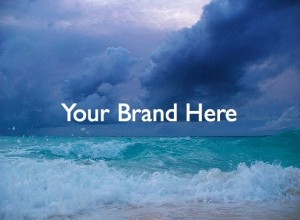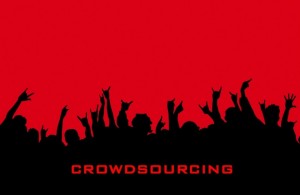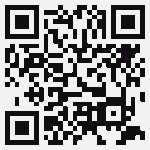 Why is it when we’re in the midst of a “crisis†we tend to think this event is somehow unique in human history? At first there is a tendency to panic and then, after way too much hand wringing, the vast majority of people eventually pick themselves up and move on. It’s only years (or months) later with the benefit of hindsight that historians are able to clearly see who the innovators were based on their courage and ultimate success while the rest flailed about in fear of change.
Why is it when we’re in the midst of a “crisis†we tend to think this event is somehow unique in human history? At first there is a tendency to panic and then, after way too much hand wringing, the vast majority of people eventually pick themselves up and move on. It’s only years (or months) later with the benefit of hindsight that historians are able to clearly see who the innovators were based on their courage and ultimate success while the rest flailed about in fear of change.
This scenario could easily be about politics, war or business since a “crisis†is often the result of a human endeavor that involves similar emotions, reactions and ultimately – solutions. In this case the subject matter isn’t about the auto or banking industry or the even the manufacturing sector that’s under siege, instead it’s about the advertising industry. At this very moment, while many insiders are worrying about their agencies, a few brave souls are charting new paths to success while also employing basic principles that still work.
Shift in Advertising Industry
A recent Fast Company article about the Future of Advertising did a clever job of evaluating and assessing the current state of the business. Clearly the old business model is on the way out and that sentiment can be summed up well with these two gems: “In the ad business, the relatively good life of 2007 is as remote as the whiskey highs of 1962.†And as Brian Collins, a former Ogilvy exec, stated, “People who [still] think that way are supremely well equipped to work in a world that no longer exists.”
Okay, so we’re all aware that the advertising industry and consumer behavior is facing a huge tidal wave of change with all kinds of new technology and two-way customer conversations – all of which were practically non-existent a few years ago. However, there seems to be too much shouting and noise about what’s wrong in advertising and for that matter, with life in general. Change happens to all industries so it’s no surprise that the agency business is having its turn.
With all the innovation in play and complexity around us in today’s world, it may appear almost counter intuitive to suggest that the fundamentals continue to be the engine of progress while we (the willing and able) adapt and adjust to new media, a new consumer/audience landscape, new competition and the access to fewer marketing dollars to invest. Yet, this is the proven principle, age old or not.
 While the advertising business model is facing much chaos and change – with that burden comes both panic and opportunity. Therefore one can whine on and on about everything that is wrong or just go about the business of finding solutions. Getting back to basics is evident all around us – it’s a matter of how we deliver the message and converse and engage with our clients/customers that has altered the playing field so fast. Just think if someone were to ask you what an App was in early 2007? A what?
While the advertising business model is facing much chaos and change – with that burden comes both panic and opportunity. Therefore one can whine on and on about everything that is wrong or just go about the business of finding solutions. Getting back to basics is evident all around us – it’s a matter of how we deliver the message and converse and engage with our clients/customers that has altered the playing field so fast. Just think if someone were to ask you what an App was in early 2007? A what?
The Fast Company article details the dismantling and obliteration of the traditional ad agency model but also shares pertinent examples of how some enterprising industry vets are finding new ways to accommodate the vast and unpredictable changes currently happening.
From the relatively new “principles of crowdsourcing†(which typically involve lean 3 – 5 person shops that hire “tiny groups of consultants from the agency, technology, and business-strategy worlds that can deploy the right team for the right action at the right time for the right outcome”), to the various schemes for “new†agency compensation models with media and creative departments being paired up again; these changes are rapidly revising the once powerful and stoic agency business model.
It is important to remember that the client’s basic needs remain the same – they want to  promote their product or service in order to generate more sales. As one enterprising client once said, “as long as what you do is within our budget and results in increased cash flow – then do it.†(Of course only an agency worth its salt would ensure the brand was protected while pursuing that directive.)
promote their product or service in order to generate more sales. As one enterprising client once said, “as long as what you do is within our budget and results in increased cash flow – then do it.†(Of course only an agency worth its salt would ensure the brand was protected while pursuing that directive.)
Science Creative is an example this new kind of advertising agency model that was originally formed by two agency veterans who saw the potential to help a variety of small, medium and larger clients navigate this “new media’ landscape by providing sound logic, smart guidance and sticking with simple and proven brand principles.
A prime example that illustrates the power of a nimble and efficient operational model of creative and strategic expertise is when Science Creative partnered with an overseas technology development and international services provider.
With only 5 weeks from start to finish, Science Creative developed and produced a comprehensive branding program that included a brand strategy, product name, logo and identity, tagline, brand guidelines, print ad, brochure, video, website, promotional premium and image library. And throughout that process the client still required the management and leadership that was expected of a partner they entrusted with their marketing strategy and execution. In other words, they still needed and received great customer service. The point being, there continues to be a need for experts to guide advertisers (clients) through the new technology and social media as well as the “traditional†myriad of details that are so often involved when launching a brand or simply creating an online strategy.
No matter what the “new technology†may be to get the word out (and share in the conversation), there continues to be a need to communicate an identifiable brand that is the voice and promise behind the company. Chaos exists when the client and the agency lose sight of what needs to be addressed in the face of so much new and rapid technology advancement. Jumping into social media without a plan of action on how to deal with instant customer feedback can be dangerous, but it can also be profitable. Taking calculated risks alone can be off putting. The client who is a savvy marketer will realize the benefits of partnering with proven advertising professionals to get the job done right.
